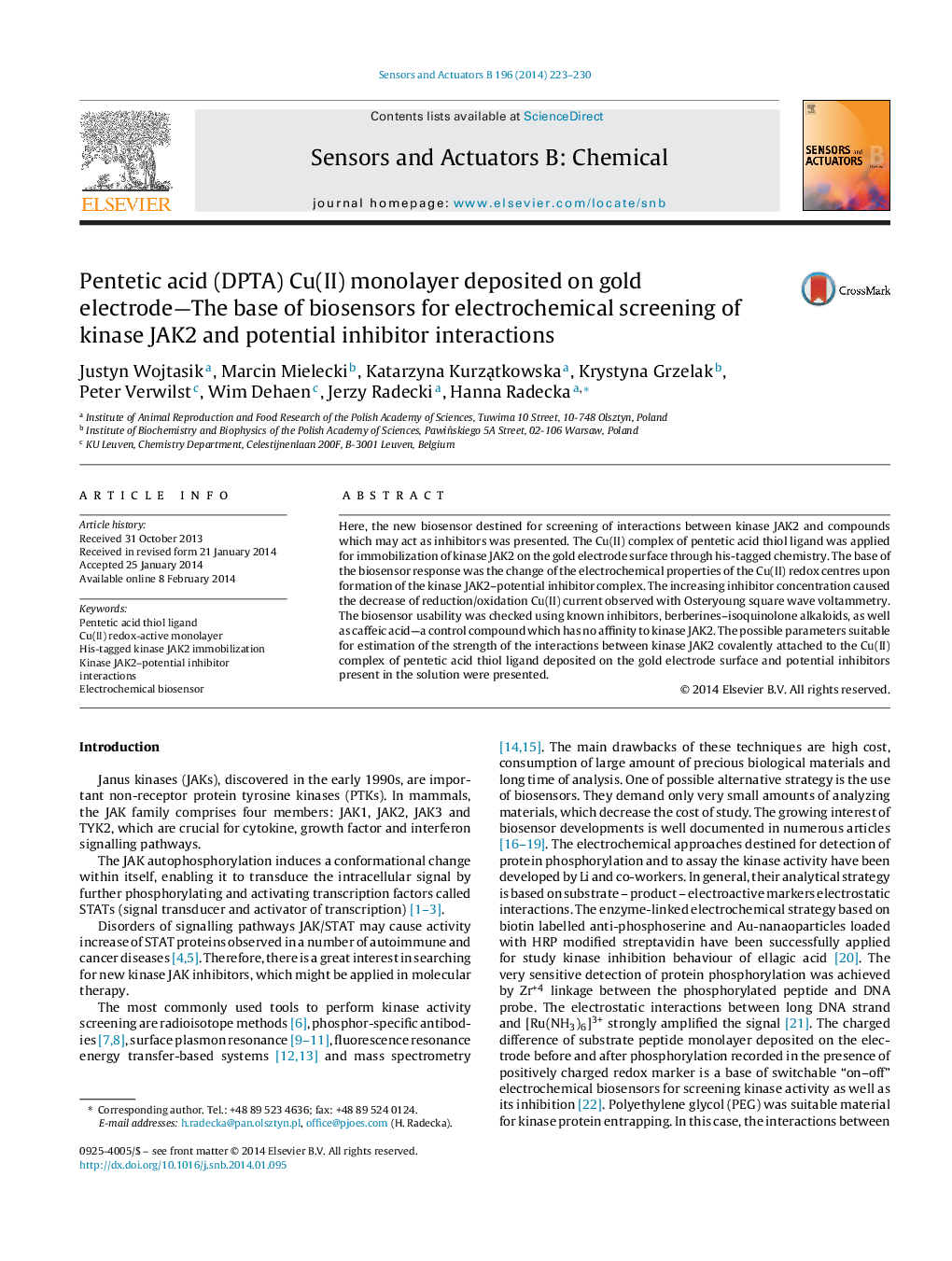| Article ID | Journal | Published Year | Pages | File Type |
|---|---|---|---|---|
| 750901 | Sensors and Actuators B: Chemical | 2014 | 8 Pages |
•We report electrochemical biosensor development for exploring the interactions between kinase and potential inhibitors.•DPTA-Cu(II) complex was used as a molecular connector for oriented immobilization of His-tagged kinase.•The interactions between kinase and potential inhibitors were observed by changes of redox properties of DPTA-Cu(II) sites.•Analytical signals were observed in concentration range from 0.05 μM to 0.20 μM.•Naturally occurring berberine analogue (isoquinolone alkaloid) was found to interact with Janus kinase 2.
Here, the new biosensor destined for screening of interactions between kinase JAK2 and compounds which may act as inhibitors was presented. The Cu(II) complex of pentetic acid thiol ligand was applied for immobilization of kinase JAK2 on the gold electrode surface through his-tagged chemistry. The base of the biosensor response was the change of the electrochemical properties of the Cu(II) redox centres upon formation of the kinase JAK2–potential inhibitor complex. The increasing inhibitor concentration caused the decrease of reduction/oxidation Cu(II) current observed with Osteryoung square wave voltammetry. The biosensor usability was checked using known inhibitors, berberines–isoquinolone alkaloids, as well as caffeic acid—a control compound which has no affinity to kinase JAK2. The possible parameters suitable for estimation of the strength of the interactions between kinase JAK2 covalently attached to the Cu(II) complex of pentetic acid thiol ligand deposited on the gold electrode surface and potential inhibitors present in the solution were presented.
Graphical abstractFigure optionsDownload full-size imageDownload as PowerPoint slide
